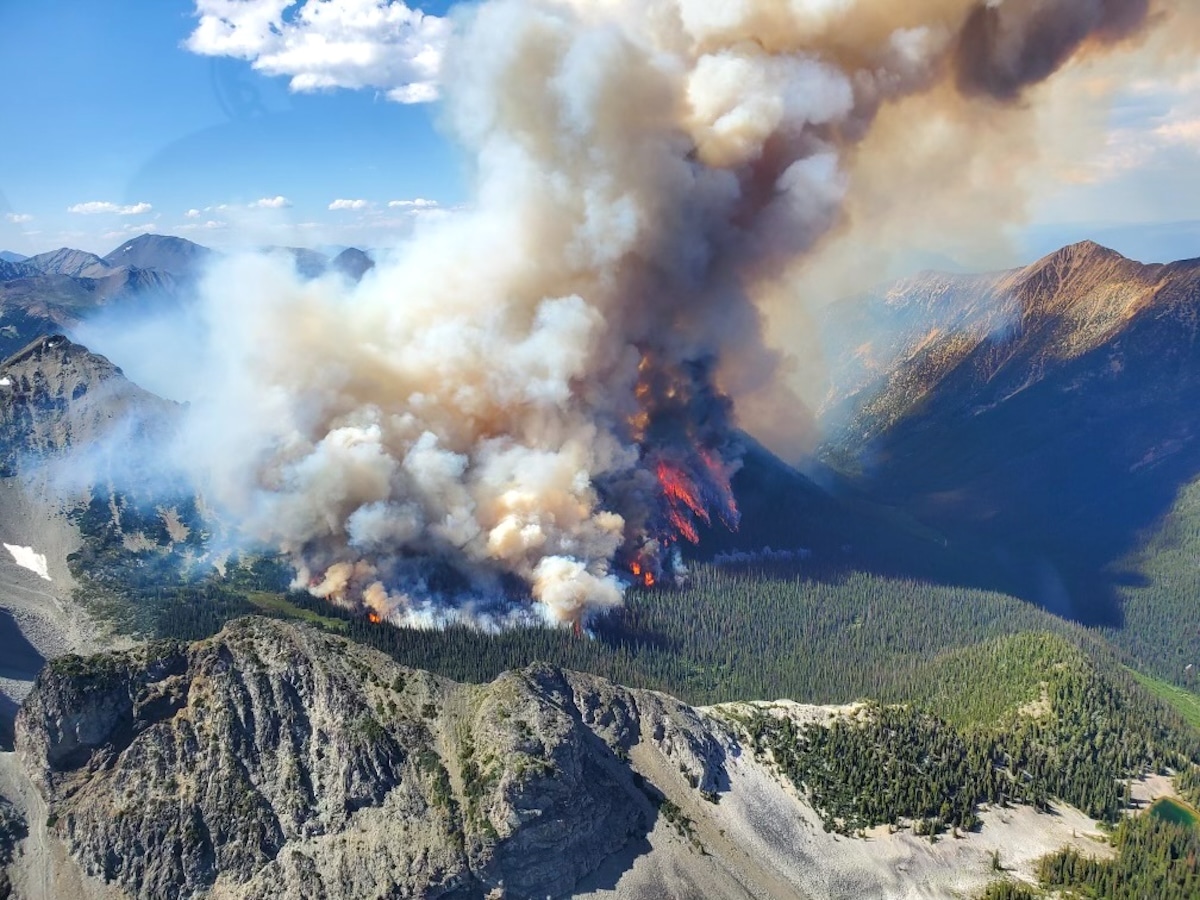Aerial view of a wildfire at Tatkin Lake in British Columbia, Canada on July 10, 2023. BC Wildfire Service / Anadolu Agency via Getty Images
Founded in 2005 as an Ohio-based environmental newspaper, EcoWatch is a digital platform dedicated to publishing quality, science-based content on environmental issues, causes, and solutions.
Last year’s record-breaking wildfires in Canada produced almost a decade’s worth of greenhouse gas emissions from wildfires in one season.
According a new study co-led by University of East Anglia (UEA), the United Kingdom’s Met Office, the European Centre for Medium-Range Weather Forecasts (ECMWF) and the UK Centre for Ecology and Hydrology (UKCEH), climate change made the unparalleled wildfires in Canada and portions of Amazonia a minimum of three times more likely and produced roughly 2.2 billion tons of carbon dioxide — approximately one-fourth of the total wildfire emissions worldwide.
“Last year, we saw wildfires killing people, destroying properties and infrastructure, causing mass evacuations, threatening livelihoods, and damaging vital ecosystems,” said lead author of the analysis Dr. Matthew Jones, a research fellow with UEA’s Tyndall Centre for Climate Change Research, in a press release from UEA. “Wildfires are becoming more frequent and intense as the climate warms, and both society and the environment are suffering from the consequences.”
The report found that wildfire carbon emissions were 16 percent above average globally with a total of 9.48 billion tons of carbon dioxide. Emissions from Canadian boreal forest fires were more than nine times above the average for the last two decades, contributing nearly a quarter of worldwide emissions.
The Canadian wildfires caused more than 230,000 people to be evacuated and claimed the lives of eight firefighters. Due to the wildfires in Amazonia, the region had one of the worst air quality readings on Earth.
The loss of carbon stocks in South American tropical forests and boreal forests in Canada will affect the climate for years to come. After a fire, forests take from decades to centuries to rejuvenate, which means a prolonged lack of carbon storage.
“The real problem begins when you have a shift in the fire regime away from its natural state and towards more frequent and severe burning. Unfortunately, that’s exactly what we’re seeing in forests, and it’s resulting in an imbalance – immediate emissions from forest fires this decade are increasingly outweighing the delayed sinks from fires in previous decades,” Jones said, as The Guardian reported.
The report aimed to explain what caused extreme fire extent in western Amazonia, Canada and Greece. The researchers found that hot, dry fire weather had shifted drastically in all three of the focus regions in comparison with a planet without climate change. Not only was the extreme fire weather of 2023 and 2024 made at least three times likelier in Canada, it was made two times more likely in Greece and 20 times as likely in Amazonia.
The attribution tools used by the research team found — with 99-plus percent confidence — that the extent of the 2023-24 Amazonia and Canadian wildfires was almost definitely greater because of climate change.
“It is virtually certain that fires were larger during the 2023 wildfires in Canada and Amazonia due to climate change,” said Dr. Chantelle Burton, Met Office senior climate scientist, in the press release. “We are already seeing the impact of climate change on weather patterns all over the world, and this is disrupting normal fire regimes in many regions. It is important for fire research to explore how climate change is affecting fires, which gives insights into how they may change further in the future.”
The study’s climate models suggested that extreme wildfires will become more intense and frequent by 2100, especially in high greenhouse gas emissions scenarios.
“Whatever emissions scenario we follow, risks of extreme wildfires will increase in Canada, highlighting that society must not only cut emissions but also adapt to changing wildfire risks,” said Dr. Douglas Kelley, UKCEH senior fire scientist, in the press release. “These projections highlight the urgent need to rapidly reduce greenhouse gas emissions and manage vegetation in order to reduce the risk and impacts of increasingly severe wildfires on society and ecosystems.”
The analysis found that the extent of last year’s wildfires in Amazonia were increased by human activities like widespread forest degradation and deforestation for agricultural expansion, which amplified climate change effects by leaving forests more susceptible to fires during fire weather and drought.
“In many tropical forests like Amazonia, deforestation and the expansion of agriculture have exacerbated the effects of climate change on wildfire risk, leaving these vital ecosystems more vulnerable,” Burton said in the press release.
Forecasts for the 2024-25 fire season indicated a continuation of above-average probability of fire weather’s dry, hot and windy conditions in portions of South and North America, with favorable wildfire conditions for June and July in the Brazilian Pantanal, British Columbia, Alberta and California.
“We’re not particularly surprised by some of the recent fires in the news, as above-average fire weather was predicted in parts of North and South America. However, the extensive Arctic fires we’ve witnessed recently have caught us by surprise — something to look at in our next report,” said Dr. Francesca Di Giuseppe, ECMWF senior scientist, in the press release.
The report, State of Wildfires 2023–2024, was published in the journal Earth System Science Data.
“These fires are something we should all be concerned about,” Jones said, as reported by The Guardian. “The full effects of last year’s fires will not be seen for a long time.”
Subscribe to get exclusive updates in our daily newsletter!
By signing up, you agree to the Terms of Use and Privacy Policy & to receive electronic communications from EcoWatch Media Group, which may include marketing promotions, advertisements and sponsored content.
